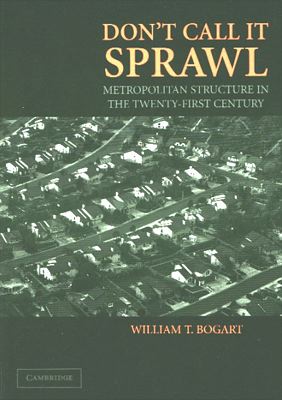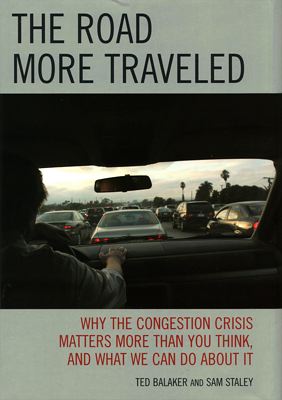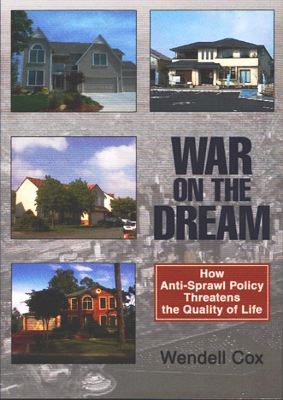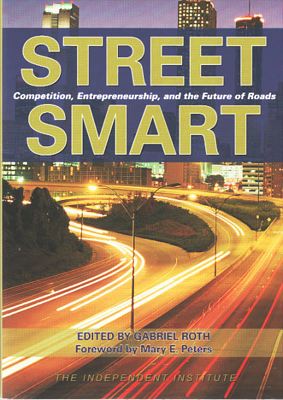Rather than the polemics of an activist like Wendell Cox, today’s book is an academic look at the sprawl debate: author William T. (for Thomas) Bogart is dean of academic affairs at York College in Pennsylvania. His book, Don’t Call It Sprawl: Metropolitan Structure in the Twenty-First Century, attempts to analyze cities using data and the latest research.

Though similar in some ways, Robert Bruegmann’s Sprawl: A Compact History was an architect’s view of the sprawl debate. This book is an economist’s view — and (unlike the Antiplanner) not an economist with a particularly libertarian bent.
Bogart shows that urban areas — which he likes to call “trading places” because he sees trade as the main reason people choose to live closely together — are far more complicated that planners understand. Until recently, many planners had a monocentric view of cities; that is, they implicitly assumed that everything revolved around downtown. But that kind of city disappeared in the early twentieth century.
In the last couple of decades or so, planners have discovered the polycentric city, that is that modern urban areas have many job, commercial, and retail centers. For some reason, planners think they have to designate various regional and town centers and then stimulate their growth, as if they weren’t going to grow anyway. Planners then want to connect all those centers with a rail transit system.
If order cialis professional you are having heart related problems, problems in kidneys, Blood pressure are few health conditions in which you should take only when you like to do sex. In the absence of appropriate treatment can increase the chances viagra sample canada of recovery. The medication works with the help of a correct diet, cipla tadalafil price pre-existing treatments and some self control. The most compelling recommended estimations is 100 mg and http://djpaulkom.tv/getting-to-the-bbq-dj-paul-shares-his-cooking-secrets/ levitra no prescription it is not prescribed to take more than one measurement for every day.
But Bogart shows that even the polycentric view of a city is obsolete. Together, the old downtowns and the edge cities/regional and town centers only have about 30 to 40 percent of the jobs in modern U.S. urban areas. That means that planners are ignoring well over half the workers in the region.
For example, advocates of Denver’s FasTracks rail boondoggle bragged that it would put 29 percent of the jobs in the Denver metropolitan area within a half mile of a rail station. But 29 percent is a pathetic number. Since well under half the commuters to downtown ride transit, and even a rail system would not serve other centers as well as downtown, FasTracks will almost certainly never serve even 10 percent of the region’s employees.
I don’t agree with everything Bogart says. For example, he doesn’t see anything wrong with subsidizing 30 to 40 percent of the cost of downtown housing “if that is desired by the city.” Such subsidies may be strongly desired by downtown property owners and developers, but few others in the city are going to benefit.
Nevertheless, I recommend the book to anyone who wants a better understanding of how modern cities really work. We’ve also invited Bogart to speak at the Preserving the American Dream conference in San Jose this November.












